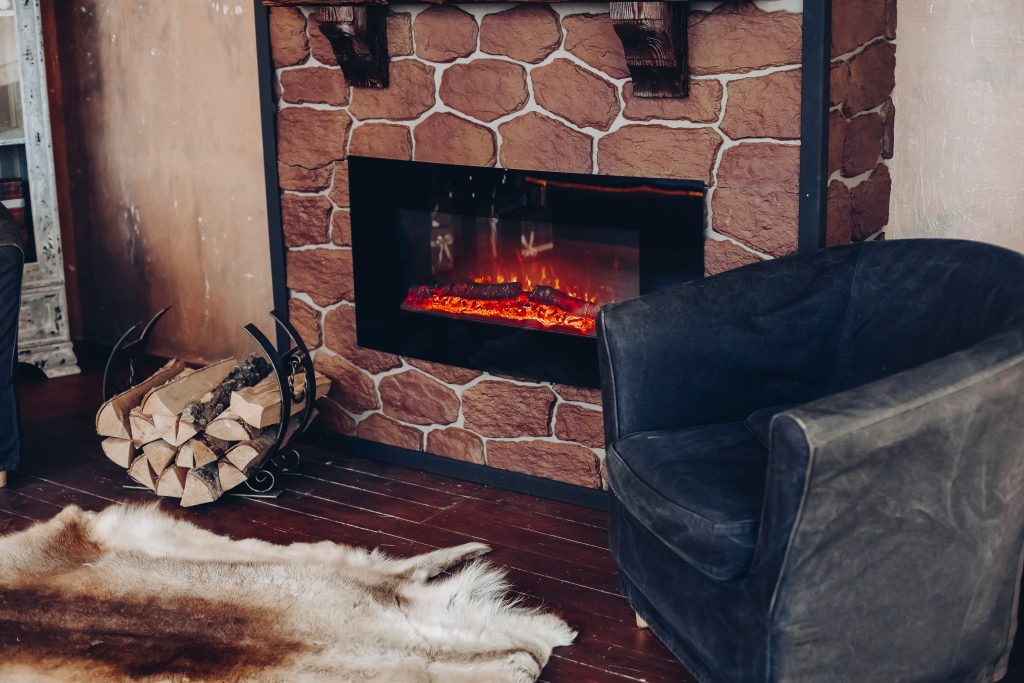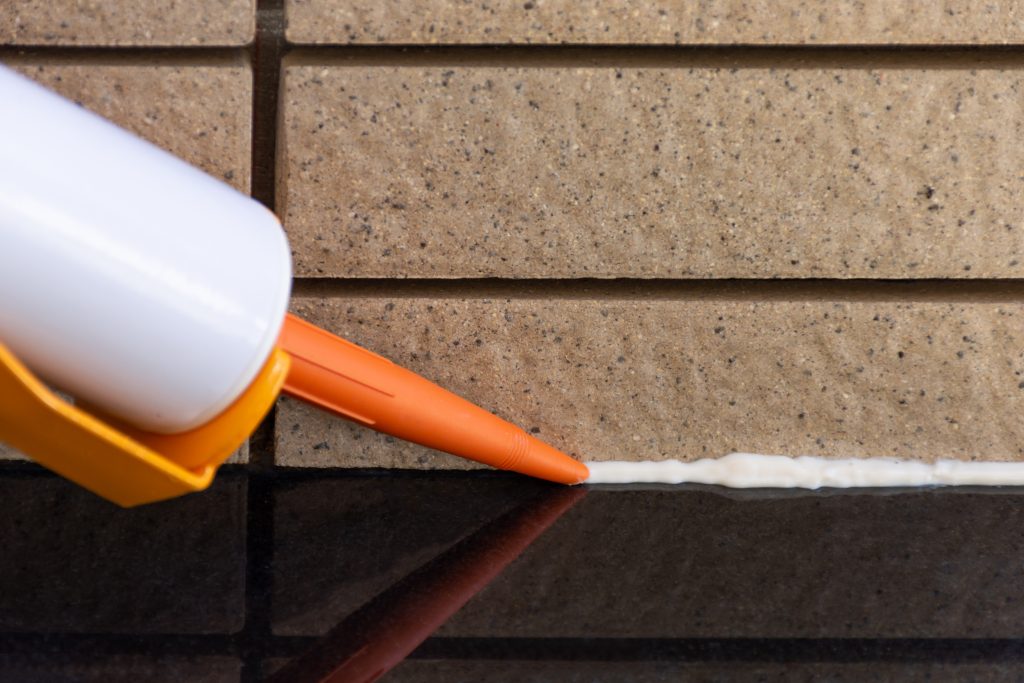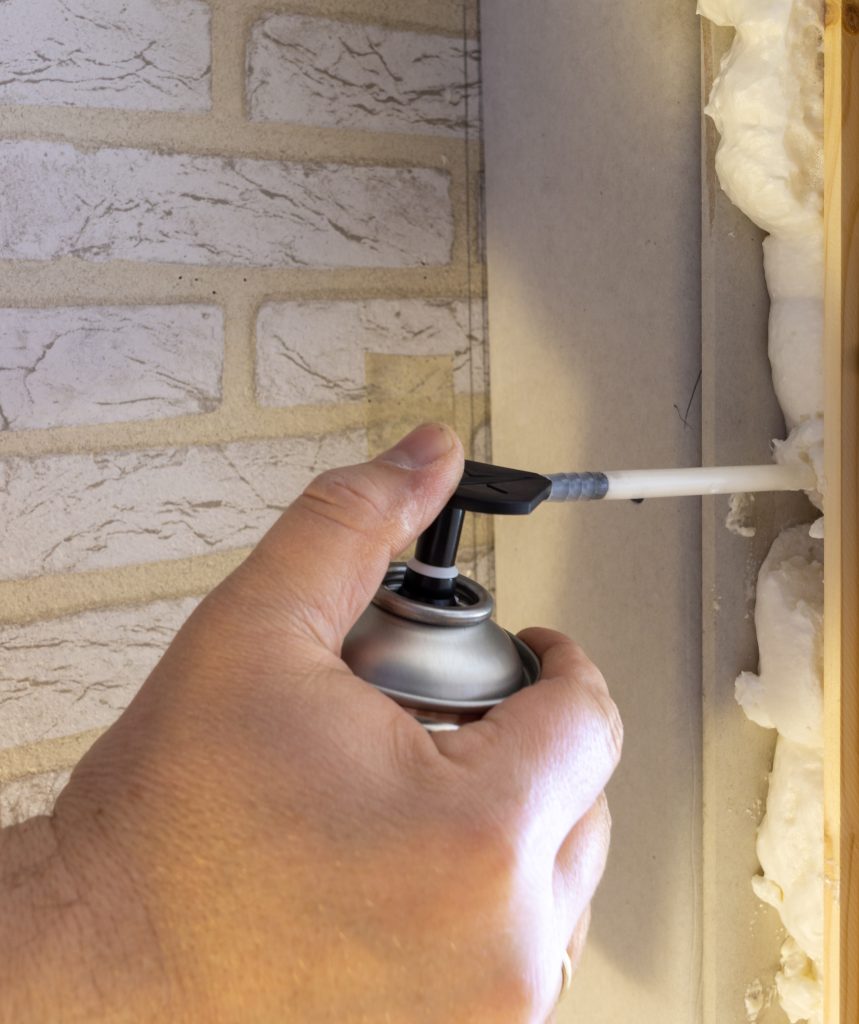Sadly, listening to the crackling of burning wood and feeling the warmth of a fire in the comfort of your home may be gone. Fireplaces just aren’t all that common nowadays. They’re expensive, and some may view them as archaic. Why install a fireplace when a radiator works just as well?
Well, some households still have fireplaces. These homes may be old, so a little maintenance here and there is to be expected. However, you may have noticed the gap between your wall and fireplace.
If you’re willing to put in a little extra elbow grease, filling this gap is simple. But why is it there to begin with, and should you even fill it at all? Let’s find out.
Why Is There a Gap Between the Wall and the Fireplace
Often, the main reason for a gap between a wall and a fireplace is to ensure the building is built to code. After all, adding a fixture that generates fire shouldn’t be taken lightly. The gap is placed there to allow for adequate airflow – it’s a safety feature.

Sometimes, a gap is placed to allow the home to shift without crumbling the entire structure. This gap, known as the expansion joint, is also a necessity in some cases.
When deciding whether to plug the gap between your wall and fireplace, it’s best to get a professional’s opinion to ensure your safety and that of your family.
Filling In The Gap
Fireplaces aren’t as common as they used to be, but many households still contain one. The craftsmanship of fireplaces sadly tends to vary. While some fireplaces like they’ve been ripped from a fairy tale, others leave much to be desired.
Case in point: gaps between your wall and fireplace. Not only are these gaps detrimental to the aesthetic value of your house, but they can also cause severe functional issues. A gap can let in a nasty and uncomfortable draft, which may skyrocket your heating bills.
Fortunately, gaps like these are usually easy to fix with just a few household products and some elbow grease. If you’ve been putting it off for a while, this guide will give you some incentive to finally fix that gap between your wall and your fireplace.
The steps can be broken down into two sections: preparation and application. Let’s jump right in.
Preparation
Any household maintenance job requires ample preparation, not only to protect your belongings but also to protect yourself. A little forethought can go a long way in these undertakings, and fixing the gap between your wall and your fireplace is no different.
- Clean The Surface
Gaps and crevices aren’t exactly known for their natural cleanliness. You’ll likely be greeted with a sizable pile of dust when you inspect the gap between your wall and fireplace. Unfortunately, your work can’t begin until it’s gone. Vacuum any dirt, dust, or debris on the surface.
- Wipe Down
Don’t get too comfortable yet. While a good vacuum can eliminate most of the dirt on the surface, years of dust and debris will have seeped into the surface itself. As mentioned, this is a job that you don’t want to perform with a dirty surface.
Get a cloth and soak it in some water to get it damp. Use this to wipe down the surface (scrub if necessary) to remove any lingering traces of dirt. - Choose The Right Filler
Now that the surface is clean, it’s time to get on with the real job and fill in that unsightly gap. If you’ve performed tasks of this nature before, you probably already know that you can’t use just any filler material. Your filler must be compatible with the type of surface you’re working with. After all, a plaster-based filler won’t do much for a wooden surface.
The steps you take after finding the right filler will depend on which material you use. The manufacturer’s instructions are usually easy to follow, and with careful application, you can fill in the gap between your wall and fireplace with a perfectly seamless finish.
Application
As mentioned, the process of applying suitable filler material to the gap between your wall and fireplace will largely depend on the filler itself. Besides selecting a filler compatible with the surface you’re working with, you’ll also need to choose between various materials, each with its benefits and drawbacks.
Fortunately, we’ve compiled a list of the most popular (and most effective) filler materials, along with instructions on their application for each.
Caulk
Caulk is easily the most common choice when filling gaps of any kind, whether it’s the one between your wall and fireplace or just an unsightly crack. Not only is the stuff relatively cheap compared to other materials, but it’s also easy to apply.

Unfortunately, caulk tends to shrink over time, and the gaps you spent so much time filling may grow once again. This can be fixed with even more caulk, but it’s definitely a hassle that may not be worth the repeated effort.
Still, if caulk is your go-to, follow these instructions to apply it properly.
- Clean the area with a vacuum and a damp cloth.
- You’ll need a putty knife or similar implement to apply the caulk properly. We recommend using construction-grade caulk here, which is more effective and durable than regular caulk. Use your putty knife to apply the caulk to the gap.
- Finally, smooth the caulk with your finger and ensure it is properly fitted into the gap.
The caulk should dry relatively quickly.
Expanding Foam
While caulk may be the go-to filler substrate for many people, expanding foam is a close second in popularity alone. Unlike caulk, expanding foam is available in both spray and liquid forms.

The stuff does a great job at filling in particularly large gaps. Unfortunately, expanding foam is hard to control and can cause a few issues.
If you’d like to try expanding foam, follow these steps.
- Give the surface a good clean with your trusty vacuum and damp cloth.
- Stick the nozzle of your bottle of expanding foam into the gap and apply it as evenly as possible. Wear a mask and gloves for protection from the fumes and chemicals.
- After the foam has dried up, use a knife to trim the excess – too much expanding foam will cause an ugly situation.
- Finally, if you notice any additional cracks (usually small ones), don’t hesitate to break out some good old caulk to seal them up for a much more polished look.
Felt
Caulk and expanding foam are both fairly popular when it comes to housework. It’s not hard to see why – while some brands may be more expensive, there’s no denying their effectiveness.
But many people don’t know that cheaper options are just as effective.
Felt is one such material. Readily available throughout most households, felt is not only a great arts-and-crafts material but also great for plugging small gaps, such as the one between your wall and fireplace.
A few small strips of felt soaked in wood glue can create a solid seal which, unlike caulk, will not degrade or shrink over time.
- Clean the surface with your vacuum cleaner and a damp cloth.
- Soak as many strips as needed in some wood glue.
- Stick these strips into the gap and let them dry. The felt will inevitably create a strong barrier that will trap the heat inside. Some paper towels can be used to fill up any smaller cracks.
- Trim the strips as needed to create a smooth, polished finish.
Filling in the gap between your wall and fireplace doesn’t have to be a big undertaking. All it takes is the right materials and ample preparation. Whether you’re using caulk or felt, take your time with the application process to ensure that the final result is as polished and aesthetically pleasing as possible.
Things To Watch Out For
Filling the gap between your wall and fireplace isn’t complicated, but there are still a few problems you may encounter along the way, so keep an eye out for the below issues.
One of the first things you’ll immediately notice when you set about this task is how level the wall is. Specifically, the fireplace and the wall must be perfectly level to ensure a smooth filling job.
In some cases, the gaps between walls and fireplaces may be intentional. After all, fire needs oxygen to burn; sometimes, houses are specifically designed to accommodate adequate airflow.
You’ll also need to be very careful about your materials. Not every substrate can withstand such intense heat; some may even catch fire. The last thing you want is for your house to burn down because you used the wrong brand of caulk.
Finally, the last thing you’ll need to look out for is air leaks. While highly effective, materials like caulk and expanding foam need to be properly applied to ensure that no air escapes. If the air does escape, it could billow smoke into your home, which isn’t good for your health. Air leaks may also make keeping a fire going much more challenging as the more oxygen escapes, the less is fed to the fire.
Benefits Of Filling The Gap
The gap between your wall and your fireplace is known as the expansion joint. It’s an intentionally empty space that allows your home to shift without destroying the entire structure.
Over time, however, the expansion joint can become too large or otherwise damaged. This leads to serious problems, such as an increased fire risk and an influx of insects and water.
Therefore, after a while, filling the gap between your wall and fireplace improves your house’s aesthetic value and increases your safety.
After filling the gap, you may also notice that you use less heat, ensuring you’re being as energy efficient as possible. Additionally, fixing the gap sooner rather than later could save you a lot of money in the long run, as more damaged expansion joints often require a more professional touch.
Maintaining Your Fireplace
As mentioned, fireplaces are increasingly rare nowadays, and households that have a working fireplace are often sought after for their aesthetic value. In short, a fireplace can give almost any household a perfect sense of coziness and warmth.
However, many people forget that in addition to being aesthetically pleasing, fireplaces are functional appliances. And like any appliance, they must be properly looked after to ensure their effectiveness.
Here are some tips for maintaining your fireplace.
Clean Regularly
Before you use your fireplace, take the time to give it a good clean. Too much soot and ash can be a huge hazard, so sweeping your fireplace regularly is necessary. Once per week should be enough, but you can also sweep every other day during the colder months.
Inspect Regularly
A damaged fireplace can also be a huge detriment. Unfortunately, some forms of damage – like cracks and loose bricks – may require the aid of a professional to fix.
Deep Clean
No one likes spring cleaning. Having to get down on your knees and scrub is nobody’s idea of a good time, and yet, it’s absolutely necessary for maintaining your fireplace.
A yearly clean with a deep-cleaning agent will remove any accumulated ash and soot, which will help to prevent fires. However, keep the manufacturer’s instructions in mind to avoid any nasty surprises in the future.
Final Thoughts
There are many benefits to filling the gap between your wall and your fireplace. Not only could it improve the aesthetic value of your house, but it may also be necessary to ensure your safety.
But this isn’t guaranteed. As mentioned, sometimes a gap between a wall and fireplace is intentional, designed to protect you from smoke and a dangerous lack of airflow. Before you set about plugging this gap, consult a professional for a second opinion.






